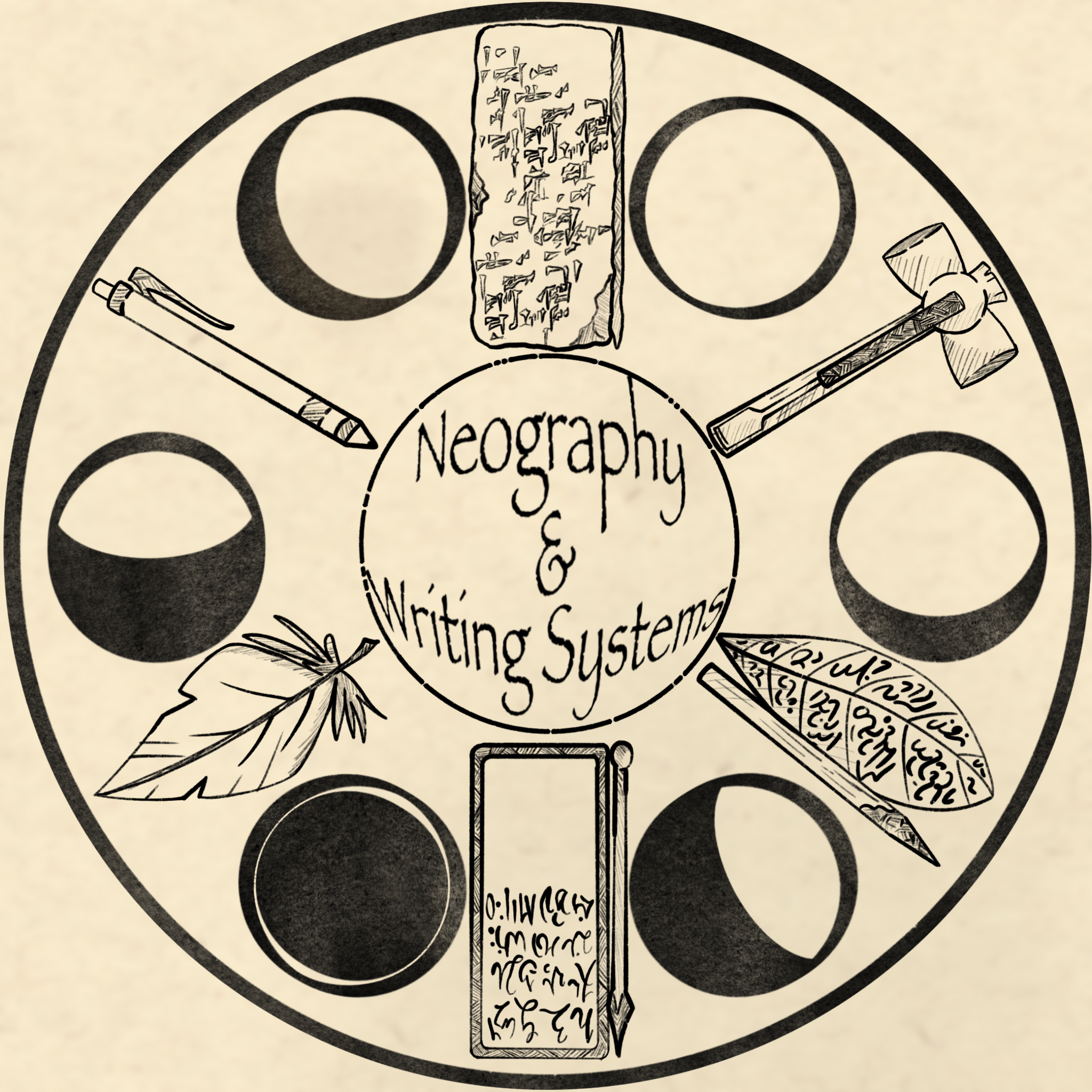Here’s a script i came up with today for an as yet nonexistent conlang that’s entirely hummed.
It’s built around /m/, which can have any tone made from these 5 pitches, and can be creaky or modal. It also features /Ɂ/ and /h/, both of which can appear anywhere in a word or sentence. Tones are written by stacking the pitches on top of each other, and a block of text is read from top to bottom and left to right. When a tone contains more than 1 pitch, they alternate being written on the left and right sides, starting at the bottom on the left. Parts of the pitches can overlap horizontally but the bottommost parts must always be in order.
Two tone sticks (i don’t have a good name for them yet) can be connected horizontally to save vertical space or to write part of a tone as creaky and part of it as modal. I don’t have a way to connect more than 2 sticks, but i could probably make one if it ever comes up. The “keep tone” thing is for lengthening the last pitch of the tone before it. It might be unnecessary since you could just add a connected tone stick of the correct pitch. Creaky voice is indicated by a ring over the tone. Words are separated by a diagonal line through the horizontal bar the whole thing is written on and sentences are started and ended using initial and terminal /Ɂ/ and /h/ or using a little curl as seen in the creaky voice picture.
Sorry if i got the IPA tones wrong. I find them a bit limited and confusing, but that’s probably just because this is my first time working with any tonal language and i’m not used to them yet. I probably won’t make a full language out of this but maybe i’ll reuse the writing system somewhere else.


I like your writing system. It’s pretty unique and tailored for the conlang; and the conlang itself uses a concept that you see often as a “re-encoding” in spoken languages, but rarely as the basis.
Regarding tone transcriptions, do you mind a suggestion? Diacritics get unruly if there are lots of tones, and you still have the creaky voice (so you’ll need diacritic stacking). You might be better off with Chao numerals instead, for example [hm⁵ʔm³⁵ʔ] [ʔm̰³⁵m⁵ʔhm²¹⁴] etc. There’s also tone letters, like [hm˥ʔm˧˥ʔ] [ʔm̰˧˥m˥ʔhm˨˩˦]; they’re a bit annoying to type out but this IPA keyboard helps in a pinch.
It’s also worth noting that there’s nothing wrong with ad hoc transcription systems. IPA is intended to be as cross-linguistic as possible, and that flexibility comes at the price of convenience; as long as you write in prose what each symbol conveys, it’s fine to get a bit creative. (That’s why there are so many localised transcription systems, like Africanist, Americanist, Indo-Europeanist etc.)
Thanks for the suggestion. I’ll look into Chao numerals. I know lots of transcription systems exist, i just usually use IPA because it’s standard and well known. Any system that’s easy to understand would work fine.